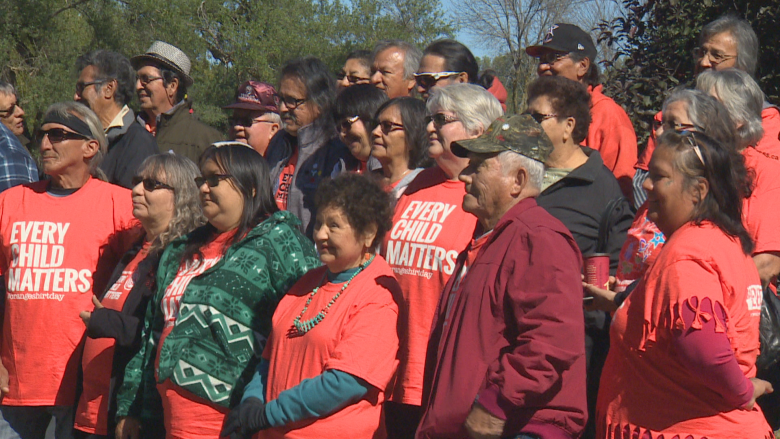Residential school survivors mark Orange Shirt Day at one of Canada's oldest residential schools
Hundreds of residential school survivors from across Ontario and Quebec returned to Brantford, Ont. to take part in a healing walk to the site of the former Mohawk Institute, one of the oldest and longest running residential schools in Canada.
The event ties into Orange Shirt Day, a day recognized across Canada to remember the trauma Indigenous people faced in the residential school system, and to promote reconciliation.
Its name comes from founder Phyllis (Jack) Webstad who said a new orange shirt given to her by her grandmother was taken from her when she attended St. Joseph Mission Residential School on her first day.
Her story and the day it has inspired has drawn the attention of leaders across Canada, including leader of the Ontario New Democratic Party Andrea Horwath.
"Orange Shirt Day asks us to confront the horrific truth about residential schools, remember the tragic outcome for thousands of Indigenous children and families, and recognize the lasting, intergenerational harm," Horwath said in a statement.
"Today, I stand with Indigenous and non-Indigenous Canadians who continue to urge all levels of government to move forward on the Calls to Action of the Truth and Reconciliation Commission."
The Mohawk Institute is also one of the few remaining residential schools in the country and it is being preserved as a historical monument honouring survivors.
Melissa Root took part in the event Saturday at Mohawk Institute and says the effects of residential schools are felt even today.
"There's alcoholism, addictions and a whole bunch of other issues within our community that we're still trying to get over," she said.
Community consultations and contributions from Six Nations have led to the school being restored, but the land surrounding the school is also being reclaimed and restored, too.
Before being turned into a park, however, some of the land has been excavated to settle beliefs that some children may have been buried under the apple trees.
"If they are there, we'll find them. If they're not, then everybody can rest easy knowing that there isn't anybody actually there," volunteer Sarah Clarke said.
Rita Root is a survivor and says she had braids at the school, but for her first haircut, they grabbed her braids and cut them off.
"I've accepted what went on and just hope that it never happens again — never," she said.




